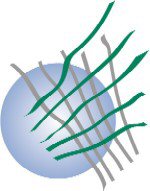OK, this is do or die for the blog. I’m either going to post at least once a week or finally decide that blogging is not for me.
I got a 40 shaft loom last year and I’m still learning how to design with that much flexibility. I long ago decided that I’m not an artist but a fine craftsperson. If you give me a blank piece of paper and a box of crayons and tell me to draw something, and then come back in two hours I’ll be sitting there with a blank piece of paper and a box of crayons. But I have no problem taking one or more weave structures and making something interesting happen with them. I have no desire for a Jacquard loom because I consider that “art” and wouldn’t know what to do with it, but with 40 shafts I’m just constrained enough that I feel more comfortable designing something.
Well, what’s on the loom now is a long warp of 8/2 unmercerized natural cotton threaded as a 36-shaft straight draw with another two shafts allocated to a half-basket selvage. I put this on so I can play with different designs and get something useful out of them. For the second towel on this warp I decided I’d like to do a block satin design. Well, that sounded easier than it was.
First problem was that satin blocks don’t fit together nicely without producing horrendous floats. Without going into a lot of detail, true satin requires at least 5 shafts and the most basic satin has 4-thread floats. When you put these together you get a lot of 8-thread floats, which are not acceptable in a towel (or most other functional items). So, the first thing I need to do was spend a lot of time enumerating the different blocks of 5-thread satin and inverting them or rotating them to find ways to combine them without getting the big floats. I haven’t done and exhaustive study (but probably will – I’m a mathematician by training) but I did enough to get the floats down to 5 threads.
The next problem was that I had a 36 shaft threading which is not a multiple of the 5-thread satin blocks. I used 35 shafts with the satin and had to figure out what to do with the 36th thread. The easy solutions either brought back longer floats than I wanted or produced an ugly line between pattern repeats. As you’ll see in the photo, my solution was ok but you can still see where the 36th shaft is. So a lesson I’ve already learned but managed to make myself re-learn is to design things where the design repeats are even multiples of the threading.
Anyway, I did two satin block designs and here is the first one I’ve woven:

The weft here is 10/2 perle cotton. This is what it looks like on the computer as I’m weaving:














